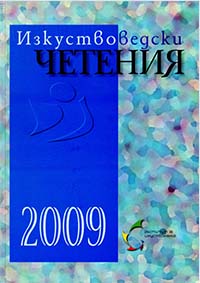За някои прототипи на стенописите от Александровската гробница
On Some Wall Paintings' Prototypes in Alexandrovo Tomb
Author(s): Vania PopovaSubject(s): Theatre, Dance, Performing Arts
Published by: Институт за изследване на изкуствата, Българска академия на науките
Summary/Abstract: Several articles have already been devoted to the Alexandrovo Tomb and its wall paintings. But since now not attention has been paid to the portraits and their headdresses. The author considers that there are three basic types of headdresses of the young men and one more of the elder man with the labrys (pelekys, sagaris). The first one is of the type Schwarzenberg of Alexander the Great, created by Lisyppos. The herm known as Azara and the head of Alexander from the famous mosaic in Naples are very near as age to the dominant portrait rider type in Alexandrovo. The second type is a modification of the first one, with hair waving during strong movements. And the third one adds to it whiskers and the classical Greek profile is more sharply expressed. We find a lot of parallels in portrait sculpture, court mosaics in Pella and the tombs of Vergina with their paintings. All three portrait types belong to persons of different rank. The naked elder man with labrys has low hair, whiskers and a beard. I. Marazov and T. Shalganova think that this person is a mythic ancestor, helping the Thracian king in the hunt. But I consider him to be Heracles. The labrys is widely used in art. But it is often shown as an attribute of animal sacrificing and in the myth of Heracles and Hyppolita. The prototype is probably also created by Lisyppos in his numerous hero's sculptures. This was the hero Alexander the Great liked very much and was depicted often with his attributes in sculpture and on coins. So for the first time we can see in Thrace the influence of the early Alexander Ill's court and funeral art. Also for the first time in Bulgaria an unpublished portrait from Panagiurishte witnesses for the cult of this ruler from the end of the late classical and early Hellenistic times. Another portrait from late Hellenism from Bessapara, now in Pazardjik museum, also belongs to this pathetic and deified image of Alexander with the famous 'melting' look. All these facts about the prototypes from the earlier Alexander age and this cult in pre-Roman Thrace appear for the first time and enrich our image of the period. This does not mean that namely Alexander the Great is represented in Alexandrov, but only that the Thracian king's
Journal: Изкуствоведски четения
- Issue Year: 2009
- Issue No: 5
- Page Range: 145-153
- Page Count: 9
- Language: Bulgarian
- Content File-PDF

